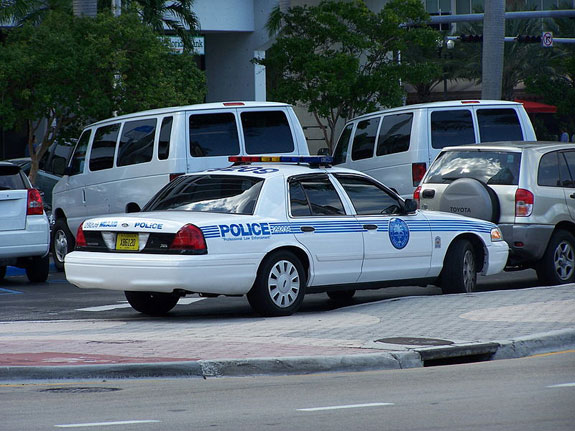
The Justice Department will investigate the Miami Police Department to determine whether training, procedures and culture contributed to the officer-involved deaths of seven black men over the past eight months. (Photo: Wikimedia Commons.)
By Ralph De La Cruz
Florida Center for Investigative Reporting
We probably shouldn’t be surprised that aggressiveness and violence are part of a police culture.
That is, after all, the world in which police live.
But just because we shouldn’t be surprised doesn’t mean we shouldn’t be vigilant. And ready to find alternatives and make changes.
On Thursday, the U.S. Department of Justice announced it was launching an investigation into the Miami Police Department to determine whether training, procedures and culture contributed to the officer-involved deaths of seven black men over the past eight months.
New police Chief Manuel Orosa seems to have embraced the Justice Department’s investigation. And he’s not waiting for the feds to start making some changes.
“Quite frankly,” Orosa said, “I’m concerned some of the shootings could have been avoided by not putting our officers in those situations.’’
One of the things Orosa proposes is cutting back on the small, plainclothes, quick-response tactical units. Under former chiefs, Miami police increasingly relied on these types of unit, which are tightly knit and hard to monitor — as the beating death of Leonardo Mercado in 1988 reminds us.
Small-time drug-dealer Mercado had supposedly made specific threats on the streets against one of the members of the elite Street Narcotics Unit. So the six men in the unit rolled up to Mercado’s house, shooed others away, and took him inside to speak with him. They allegedly beat and kicked Mercado so brutally for 10 minutes that his corpse was left with a permanent imprint of the bottom of one of the policeman’s sneakers.
When a jury either voted for acquittal or couldn’t reach a verdict, and the six were freed in 1990, there were riots in the predominantly Puerto Rican neighborhood of Wynwood. In 1994, the four accused Miami officers who were still alive were finally convicted of misconduct.
There have been so many cases of questionable police conduct in Miami that it’s almost trite to recite cases such as the beating death of Arthur McDuffie, a 33-year-old insurance agent, in 1980. When an all-white Tampa jury acquitted the Miami officers, there were three days of riots. In the decade leading up to the McDuffie incident, there had been 13 “mini riots,” most occurring as a result of violence between police.
So, it may be educational to check out a report released Wednesday — the day before the Justice Department announced its investigation — from the Bureau of Justice Statistics on face-to-face contacts between police and the public.
The report is based on the most recent Police-Public Contact Surveys (PPCS), from the last six months of 2008.
The main reason some 40 million people had contact with police during that time was because of a traffic stop. An amazing 85 percent believe they were stopped for a good reason. And police pulled over about the same proportion of white, Latino and black drivers. Ninety percent of folks believed that police were respectful.
But when it came to getting searched, black drivers were searched more than four times as often as white drivers, and more than twice as likely as Latinos. And blacks were twice as likely to get arrested. White drivers were given a warning at twice the rate of black drivers and almost three times greater than Latinos. But when it came to people feeling that the threat, or use of, force by police was excessive, the percentages were fairly even, from 70 percent among black drivers to 72.8 percent of whites and 78.9 percent of Latinos.
So there’s good news in the BJS report. But also some clues as to why Department of Justice investigators will be spending time in Miami over the next few months.
